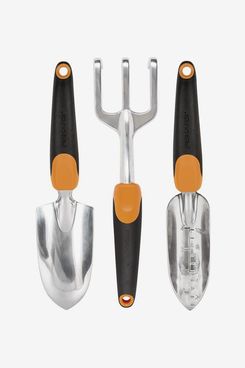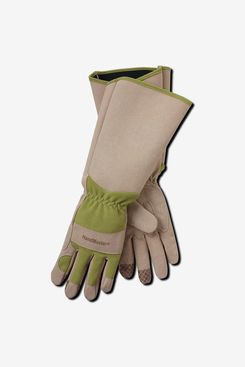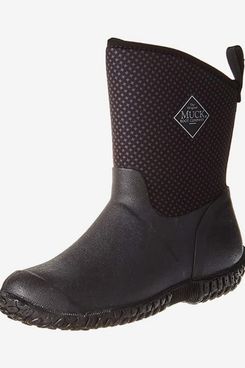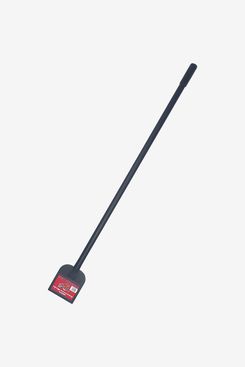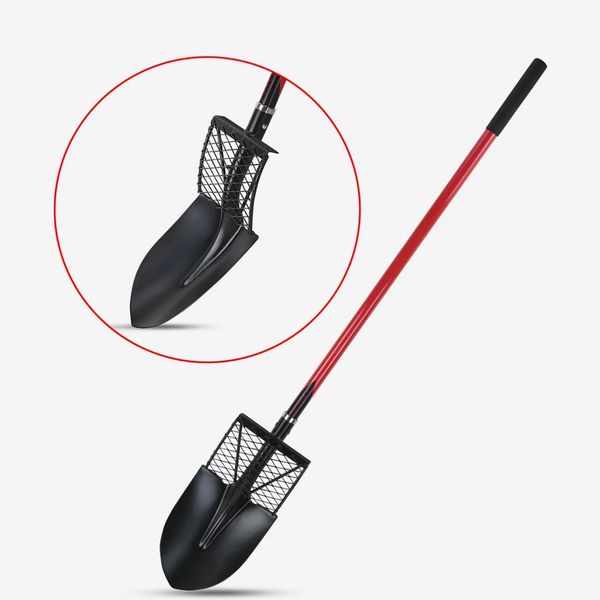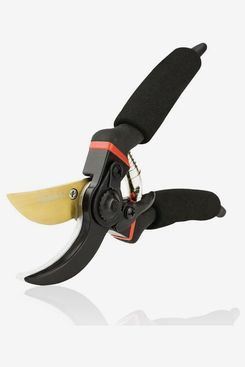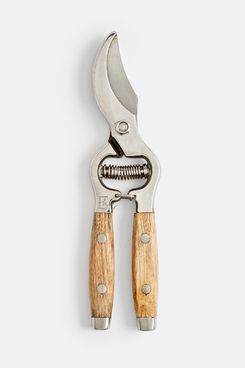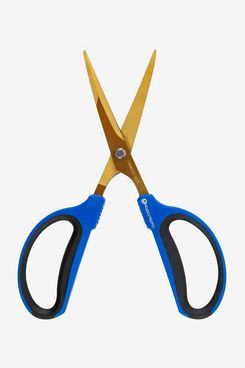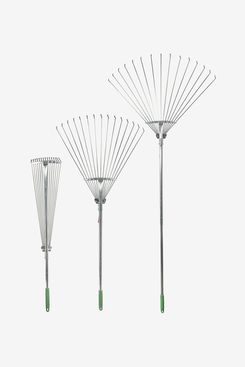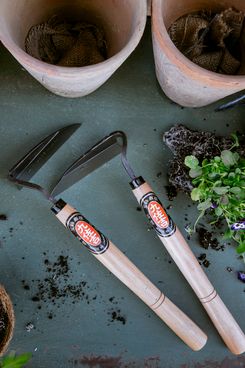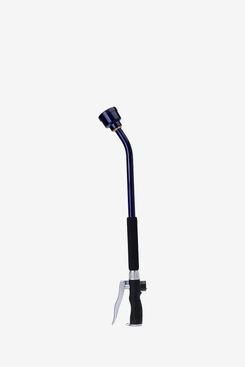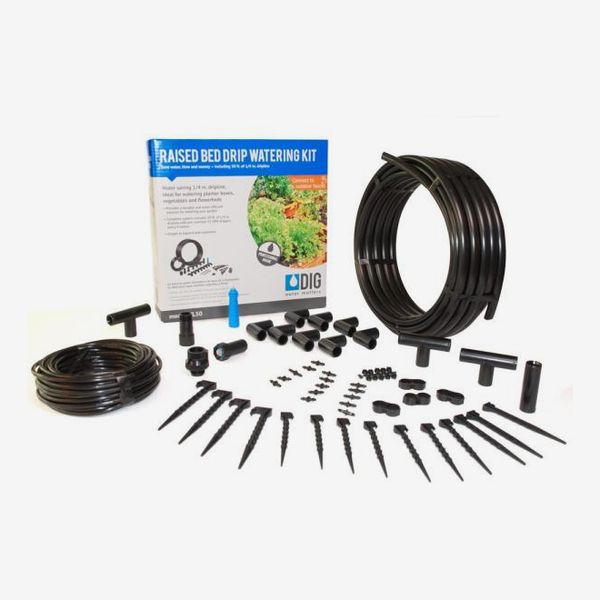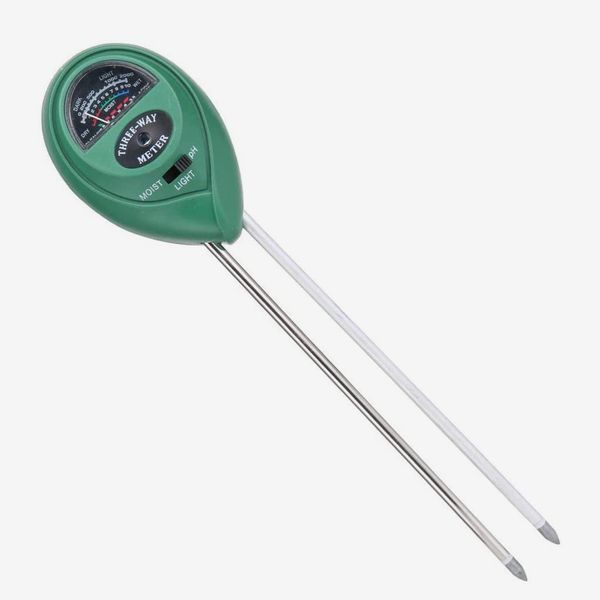
Whether you’re growing flowers or vegetables, planting your very first garden or your 20th (and even if you’re a self-sufficient homesteader), there are certain tools that every amateur horticulturist finds to be essential. So, to help you find the best tools for all of your upcoming gardening projects, we asked four experienced gardeners about the gloves, boots, scissors, hoses, and shovels they rely on to grow healthy, beautiful, and delicious plants. Below are the thirteen gardening tools that they use the most.
Before we get to that though, Joseph Truini, who co-wrote this post and is a dedicated gardener of nearly four decades, has one important piece of advice for you to remember: Your tools will take care of you if you take care of them. “During gardening season, I like to clean each tool of any caked-on dirt once a week. And each month, I sharpen dull edges with a mill file like this one and brush off all rust with a little steel wool or a wire brush,” he says. “If your garden doesn’t appreciate it, at least you will.”
Truini has bought and relied on dozens of tools — and tested probably a hundred more as a contributing editor for Popular Mechanics and other magazines. According to him, these are three of the most essential of all gardening tools. And they come packaged together in a convenient, economical set. It includes a garden trowel for excavating shallow holes and trenches, a three-tine cultivator for loosening up hard soil, and a measured transplanting trowel for digging holes to precise depths, which is especially important when planting bulbs. “Each tool has a contoured, comfort-grip handle permanently affixed to a polished cast-aluminum blade that’s extremely durable and rust-resistant,” he says.
If you’re new to gardening, you might not consider gloves an essential tool, but your hands most certainly will. “Gloves keep your hands clean, but more importantly, they protect you from cuts, scrapes, and punctures, all of which are virtually impossible to avoid while excavating, sowing, pruning, weeding, and harvesting,” Truini says. Rather than buying simple cotton gardening gloves, which offer only a modicum of protection, he suggests investing in these 18-inch-long, professional rose gardening gloves. The gloves are made of synthetic leather that’s puncture-resistant and much more supple and comfortable than animal leather. The elbow-length gauntlet cuff shields your wrists and forearms from injury, and extra padding is provided across the knuckles and fingertips.
Gardening can quickly wreak havoc on your shoes, and getting a pair of waterproof boots will save you heartache in the long run. Becky Searle, an ecologist and botanist who documents her gardening adventures on Instagram at sow_much_more, is a huge fan of Muck Boots. Her favorites are the Muckster II because they’re light, flexible, and very comfortable. “These are my go-to shoes whether I’m in my garden, walking my dog, or doing the school run,” says Searle. In addition to comfort and flexibility, Muck Boots are widely beloved for their superior grip, breathable but warm lining, and ability to easily shed debris.
“I dug a new garden bed last year, which is hard, slow work, but what made it marginally faster (and more bearable) was using an ice chipper instead of a shovel,” says Willy Blackmore, senior reports editor at Curbed and an avid gardener. In the wintertime, you use an ice chipper to chip away at any ice that builds up on your steps, sidewalk, or driveway. But you can also use the steel chipping head to dig a garden bed by pushing it through the grass and down into the dirt around the perimeter of the square you want to dig. Then you can easily pry the square up to reveal the dirt beneath. “Popping up one neat square of sod at a time is much faster than digging out the grass with a shovel. And it leaves you with a nicely graded surface too, once the digging — or chipping, rather — is all done,” he says.
Truini recommends the Tracey Garden Smart Shovel as a much-improved update to your standard garden spade. It has a commercial-grade, 14-gauge tempered steel blade and a virtually indestructible fiberglass handle reinforced with steel. But what makes this shovel unique is the built-in soil grater conveniently positioned at the base of the handle. “Instead of wasting the soil that clings to the roots of discarded plants, you can scrape it off the grater — and salvage it to use somewhere else in your garden,” he says.
A sharp pair of pruners is essential for any gardener. That’s why Truini prefers bypass pruners, which are designed so that the top blade slices past the bottom blade, resulting in very quick, clean cuts. (With anvil pruners, the other common variety, the top blade chomps down onto the bottom blade.) The durable titanium-steel blades on this pair are polished to razor-sharpness and can slice through stalks, branches, and saplings up to three-quarter inch diameter. There’s even a special groove that helps channel away sticky sap that can gum up and stall the pruner.
Blackmore also prefers bypass pruners and says a good pair can be used for everything from actual pruning to harvesting tomatoes or squash. “I call them snips because that’s what you do with them: snip things. I like that these don’t have plastic handles, which I find tend to break easily and just don’t look all that nice,” he says. “I’m a sucker for beautiful garden tools.
To complement his bypass pruners, Truini uses these small garden scissors that have very thin, supersharp blades specifically designed for cleanly snipping flower stems, trimming buds, deadheading (the removal of dead flowers), harvesting herbs, and pruning houseplants. They feature Teflon-coated nonstick blades and large, ergonomically designed handles.
If you’re using a standard leaf rake to smooth soil and clear debris from your garden, you know the frustration of trying to fit it into tight spaces and between narrow rows of plants and vegetables. But this lightweight aluminum-alloy rake, recommended by Truini, features a variable-width head that you can easily adjust from 7 ½ inches to 21 ¾ inches wide. “When the steel tines are adjusted to the narrowest width, you can easily rake under hedges and between perennials without damaging the delicate plants,” he says. At its widest, it can be used as a standard leaf rake. The telescopic handle is also adjustable — from 37 inches to 68 inches long — to accommodate gardeners of various heights.
“I love Japanese gardening tools, and the left-handed weed sickle (made in Japan) that I have is a great example of why: it has a knife-sharp blade, it’s incredibly effective, and there’s a version for lefties like me,” says Blackmore, who bought his at a shop in Camden, Maine, called Sugar Tools. It has a short wooden handle with a straight steel blade that points back toward you when you’re holding it. Swinging the blade at the base of a clump of weeds will cut the tops clean off. Or you can use it to peel back a swath of grass by chopping away at the roots as you roll the sod back. You can even use it to do a little light pruning if the blade is really sharp. In addition to cutting out or away stuff that you don’t want in the garden, Blackmore says you can use the tip of the blade to make furrows or holes for planting seed or seedlings, and the blade can also be used for harvesting too. “It’s particularly good for things like cabbage that have a really thick base to cut through,” he says.
According to Truini, one of the easiest and very best ways to water a garden is with a watering wand. “Unlike a standard hose nozzle, a watering wand delivers a soft, soaking shower — not a damaging blast,” he says. This particular wand has a 24-inch curved aluminum shaft that makes it easy to reach over, between, and under closely spaced plants in order to saturate the root zone. Its long-reach design is also ideal for watering overhead hanging baskets and flower boxes.
If you’ve got raised beds and want to automate your daily watering, Southern California gardener CaliKim, whose YouTube tutorials help millions, suggests checking out this raised bed irrigation kit because it’s “easy for beginners and has everything included to get started.” The kit has enough hosing to cover up to 50 feet (ten rows of vegetables), but can also be connected to a second set for use in a bigger space.
The flowers and vegetables in your garden depend on high-quality, nutrient-dense soil to grow big and lush. With this simple handheld device, Truini says you can quickly monitor the three most important factors in maintaining healthy garden soil: water, sun, and pH value. “Simply plunge the two steel probes into the ground and the easy-read meter will indicate if it’s time to water, whether the plant is getting enough sun, and if the soil is acidic or alkaline. (You always want neutral soil,)” he says. The three-in-one meter needs no battery and can be used to monitor virtually any plant, including flowers, vegetables, lawns, and even houseplants.
The Strategist is designed to surface the most useful, expert recommendations for things to buy across the vast e-commerce landscape. Some of our latest conquests include the best acne treatments, rolling luggage, pillows for side sleepers, natural anxiety remedies, and bath towels. We update links when possible, but note that deals can expire and all prices are subject to change.
